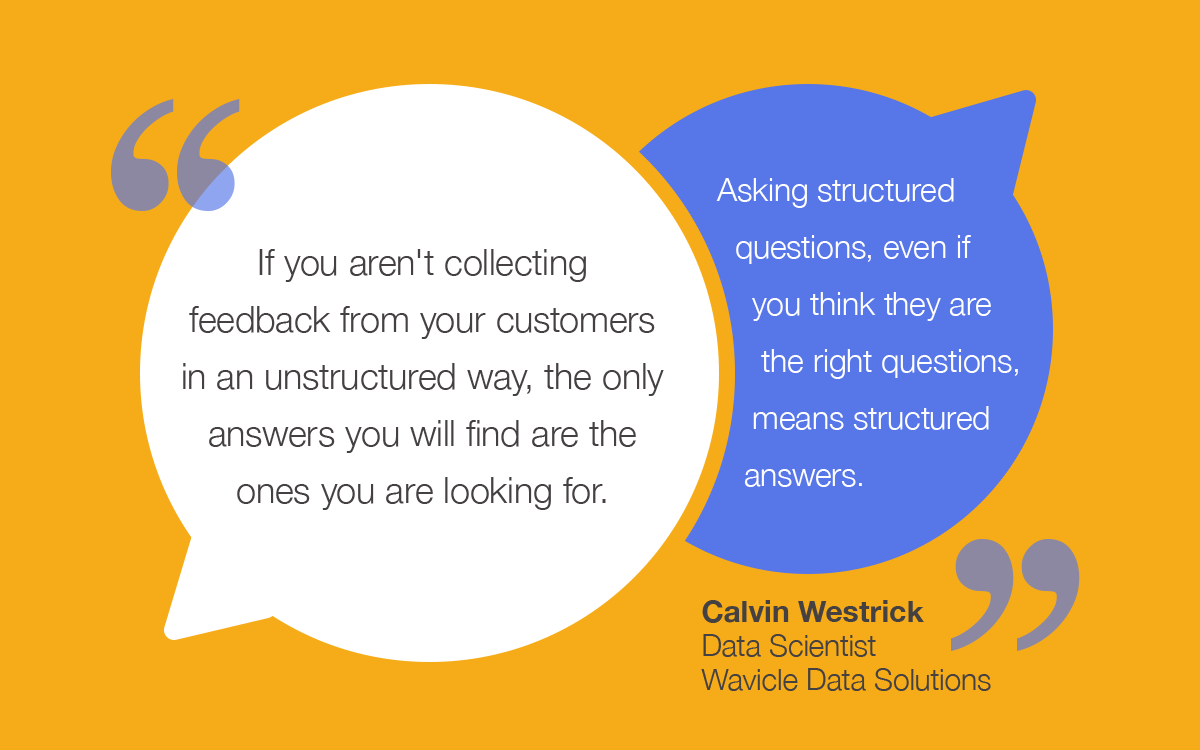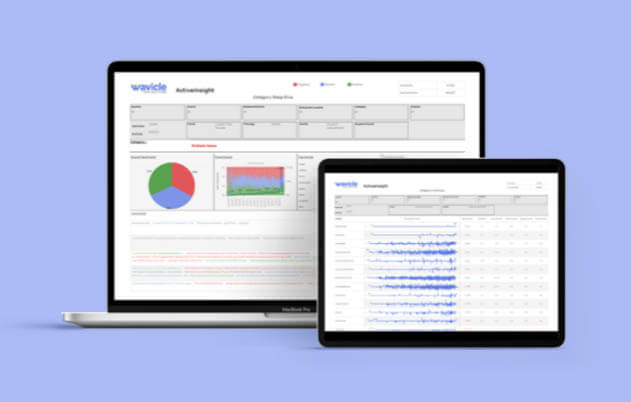Elegant terms like customer journey are a wonderful tool for marketers. There certainly isn’t a shortage of similar phrases. Holistically, it’s a simple concept. The practice of collecting customer feedback and using it to enhance customer experience (CX) is as old as the art of selling itself.
The agora of ancient Athens is an example of one of the first true marketplaces in history. Like today, successful merchants asked customers how they could improve their product or service, recorded answers, and created actionable outcomes. Now, the agora consists of mass digitization, eCommerce, and omnichannel retail. Customer data from social media, NPS, CSAT, focus groups, and market research are verbal feedback.
The reward for improving CX with a complete VoC strategy? Let’s start with the most important one — profitability. A Bain & Company analysis shows that companies that excel in customer experience generate revenues 4%–8% above their market. And that certainly isn’t the only win:
Benefits of a complete VoC Strategy:
- Increase customer satisfaction
- Improve customer loyalty
- Refine customer segmentation
- Discover customer needs
- Enhance new product development
- Reduce churn
- Attract new customers
- Understand detractors
Gartner estimates, 60% of organizations with over $1 billion in revenue have embarked on a VoC program to boost CX strategy. But many are missing crucial components in methodology or implementation. Others don’t have the bandwidth to begin. Even with a complete understanding and a strong internal data and analytics team, the immensity of a VoC program often requires external support.
The steps of a successful VoC program
What to do with all that unstructured data?
Gartner predicts the total volume of data to reach 175 zettabytes by 2025. Within that somewhat unimaginable number, unstructured data makes up 90% of it. Unstructured data, or qualitative data, is data that isn’t structuralized in any predetermined fashion or using a pre-defined model. Traditionally, unstructured data is almost always text but it is quickly expanding to include audio, image, and video.
Stakeholders must fully understand the connection between unstructured data and customer success. But what does the increasing volumes of data in an unstructured state create? According to a Techjury report, 95% of businesses cite the need to manage unstructured data as a problem for their organization. Here is a breakdown of the steps needed to unlock the potential of unstructured data.
Collection
Unstructured data collection is business-objective specific. An organization must decide which sources and metrics align best with its preferred outcome. Examples of VoC data are plentiful. Choices range widely from customer surveys to call center data to IoT remote system data. Like the collection of all data, privacy regulations like GDPR and CCPA are essential. Sounds simple enough, but collecting volumes of multi-sourced data in real-time presents a problem — storage.
Storage
Simultaneously with the collection, an organization must have reliable and accessible storage for the swaths of unstructured data. On-Premises storage is still widely used but is quickly becoming impractical with volume. The lack of a native format for unstructured data makes an ideal storage situation using cloud data lakes. Migrating from On-Premises to cloud storage presents its own difficulties. Wavicle has proven cloud migration solutions and expertise.
McDonald’s wanted to migrate its entire on-prem IT ecosystem to Amazon Web Services (AWS) and its data integration technology to Talend. Wavicle successfully converted all ETL jobs to Talend, saving 95% of the analysis work and 81% of the development effort.
Download case study
Analysis
With an undefined format, unstructured data requires data scientists to analyze and transform it into accessible voice-of-customer data. As one might imagine, with the immense volume of unstructured data, the bandwidth and capabilities of an organization are a constant challenge. Like the advancements in storage, solutions and technology allow organizations to transform their unstructured data into customer insights faster and at scale.
Natural Language Processing (NLP)
Natural Language Processing is the real hero of a successful and customer-centric VoC program. Without using the linguist cousin of AI, you really can’t empower customer data. There is a reason that the global NLP market will reach $80.68 billion by 2026.
Using language-based algorithms, NLP deciphers the swarm of unstructured text data. Text analysis turns our complicated languages, grammar, and sentence structures, which mean nothing to a computer, into something it understands. A translator between human and machine.
Here is an easy way to think about it. The text you are reading right now is being fed through NLP on search engines to determine its relevance to users. Each word is being broken down and built into a ranking system of its value for answering questions.
Organizations can collect customer feedback all they want. But unless they employ literal armies of data scientists and engineers, driving actionable insights isn’t possible without NLP. While this technology revolutionized the breakdown and conversion of text to data, a pain point persists, true understanding of the meaning.
Complete and accurate sentiment analysis
Anyone that’s mastered a new language understands the difficulties in nuance, slang, and structure. Today, even the most advanced AI faces the same problem. It’s difficult to determine if textual customer data is positive, negative, or mixed. Complete sentiment analysis contains four steps:
- The text needs to be broken down into multiple sub-comments. Here is an example of a common problem with sentiment analysis in the video game industry. A user might respond to a survey with something like this: “I downloaded a new RPG, it’s awesome, the server was slow.”
- The “it” refers to a role-playing game, but advanced machine learning needs the training to recognize and understand that.
- Each sub-comment needs to be categorized and assigned to prevent mixed sentiment. So the downloading process of the video game was neutral, the video game itself was positive, and the server was negative.
- The end-user can then categorize all the different topics involved in the video game process to easily obtain specific feedback for each.
Without advanced text analytics using ML, the above statement is often placed into a mixed sentiment class. The mixed sentiment means ignored touchpoints and lost valuable insights from customers. Missing value of customer sub-comments weakens the entire VoC program. Now that the valuable unstructured data is becoming structuralized, it’s time to create a full 360 customer view.
Combining unstructured data with structured data
Fortunately organizations have plenty of structured data from internal and external sources. To build the complete customer picture now is the time to combine all the data from the VoC program with structured data. The combined data can then be stored in any form of a relational database, like a data warehouse or data lake.
Like the above video game industry, data sources might include payment transactions, customer loyalty clubs, download history, and third-party data from online marketplaces like Steam.
A user-friendly experience
Collecting, storing, analyzing, and structuring customer feedback data is a must for any modern organization and its VoC program. But is it any good if the end-user can’t easily access it, understand it, and use it to drive strategy? Data visualization builds an up-to-date single source of truth. As customers, everyone has used an app that has terrible UI/UX. It’s the same for business, if it’s poor and unnavigable, it won’t be effective.
Front-end dashboards and apps allow members of organizations to read and react with insights from all the above data. They must be able to navigate through specific topics of customers, like the video game example above, and quickly understand the feedback data.
Users need to easily identify trends and answer questions within a few clicks. The UI must highlight data that requires immediate follow-up, like safety issues. Customer feedback is now in its final phase and ready to improve CX. The capabilities of AI expand every day, so there is even more unstructured data to go after.
Beyond text analytics
As stated earlier, unstructured data is still dominated by text. But where does that leave the volumes of audio, image, and video data? Deep Learning forms of AI collect, store, analyze, and turn them into text.
Most people have experienced frustrating phone calls with a bot that struggles to understand voice commands. That is an example of speech recognition and the most simple form of audio communication between man and machine. Alexa and Siri have come a long way since 777-FILM.
Speech-to-text is a powerful form of NLP-based Deep Learning. It doesn’t listen to a command and send a customer to the next menu, it breaks down human speech into smaller components and converts it into textual data. This data is available for the back end of the VoC program and goes through the processes above.
According to Gartner, 81% of internet traffic is video-based and only expected to grow. Humans communicate enormous amounts of information, emotions, and preferences with their facial movements and body language. Deep Learning capabilities of ML identify objects, people, activities, and more in images and video.
These advancements are already making the internet a safer place by identifying inappropriate content. Online learning presents an opportunity for institutions to better understand student interaction by analyzing student faces on videos.
Future technology with sensors and IoT can provide real-time customer data from multiple devices using geo-location. Imagine a bartender at a hotel knowing exactly what drink to pour a guest when they enter the bar.
ActiveInsights, powered by Amazon Web Services (AWS)
A VoC program from collection to outcome requires huge amounts of organizational bandwidth, expertise, and technology. Even a company the size and complexity of McDonald’s needed a custom AWS-based solution at scale to save time and improve the accuracy of its customer feedback program. If an organization can’t complete any of the steps of a successful VoC program internally, it must rely on external support. Any missing steps prevent a complete picture of customers.
According to Forbes Insights, 83% of executives surveyed said they faced moderate to severe risks to their revenue and market share as a result of unimproved customer service. Learn how market leaders are successfully turning 2021 into “the first year of customer experience.”
Read more
The collection of unstructured data at scale is already enough of a challenge for organizations. After the collection, it’s often siloed between teams and tools. The separation of the data prevents actionable customer feedback in a holistic and insight-based manner.
Wavicle’s ActiveInsights, powered by Amazon Web Services (AWS), is our AI-driven VoC solution. After users collect unstructured data and store it with AWS, ActiveInsights uses the advanced capabilities of AWS Comprehend to begin analysis.
What does ActiveInsights look like in action?
Check it out.
Watch video
With complete sentiment analysis and understanding of sub-comments, ActiveInsights turns unstructured customer feedback into a structured form. The customer can then add their other forms of structured data for complete and accurate customer feedback. The combined customer data integrates into a powerful cloud-based data warehouse and displays in a clear and user-friendly dashboard. The VoC program is now in its final stage — empowering individual employees’ service and performance.
What does it mean for organizations and the leadership involved in customer insights? A cost-effective voice of customer solution with 10x more accurate results, at a 70x faster rate. For AWS users, it’s a seamless transition to transform unstructured data, add accurate customer sentiment, and drive results with complete insights — all with a couple of clicks.
It’s time to fully understand your customers. Request a demo and see it for yourself.
ActiveInsights™ Demo



